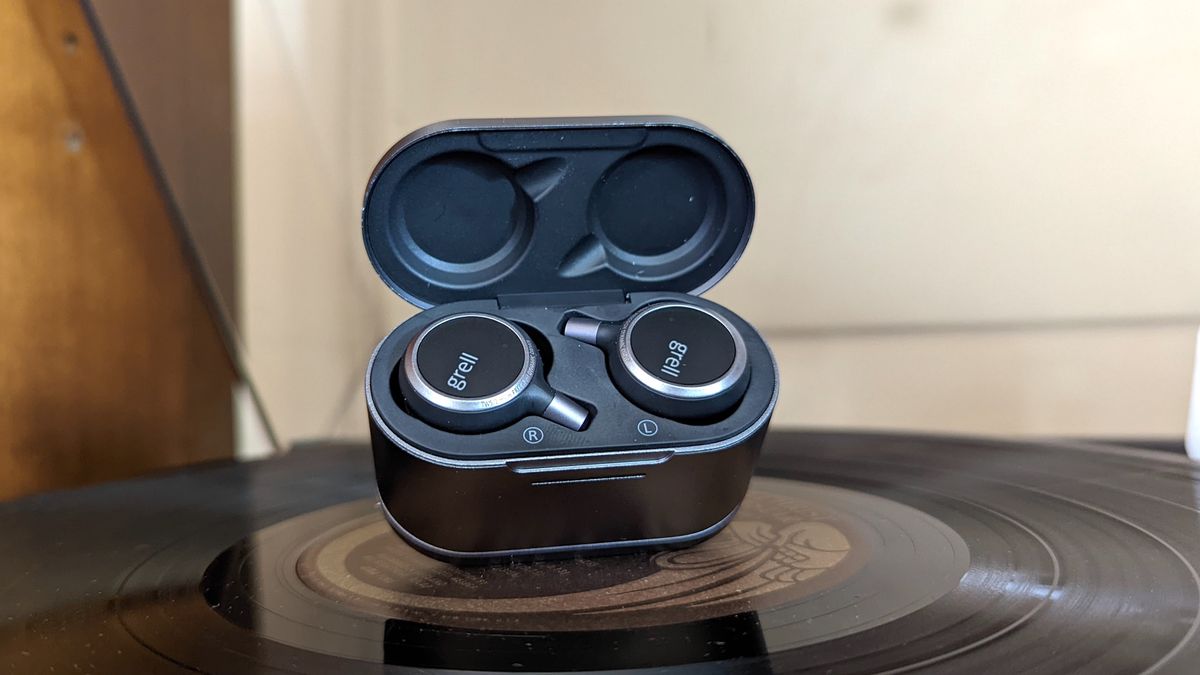Laptop Mag Verdict
Made by ex-Sennheiser engineer Axel Grell, the TWS/1 shows up the competition with intelligible ANC and near-category-leading sound.
Pros
- +
Exceptional audio quality
- +
Adaptive, effective ANC
- +
Luxe design
- +
Sufficient battery life (for buds)
- +
Bluetooth 5.2 and wireless charging
Cons
- -
Finicky controls
- -
Very few extra features
- -
Charging case doesn’t hold charges long
Why you can trust Laptop Mag
The Grell TWS/1 is the brainchild of ex-Sennheiser engineer Axel Grell. For these noise-cancelling earbuds to make any impact right out of the gate, Grell Audio had to bring more to the table than just impressive ANC. Consequently, they developed their own proprietary feature aptly named Noise Annoyance Reduction (NAR) for reducing high-frequency noises. Then they went to work engineering these beauties with modern wireless technologies (Bluetooth 5.2 with aptX Adaptive and LHDC codecs integration) and some of the finest audio performance in the category.
Price: $199
Colors: Black
Battery life (rated): 6 hours (ANC on); 8 hours (ANC off); 30 hours (charging case with ANC on); 40 hours (charging case with ANC off)
Connectivity: Bluetooth 5.2
Water resistance: Yes (IPX4 rated)
Size: 2.59 x 1.33 x 1.54 inches (charging case)
Weight: 0.25 ounces (per bud)
- Our expert picks for the best wireless earbuds, per budget and style
- Check out our Apple AirPods Pro review
- …and our Sony WF-1000XM4 review
Not every first attempt goes as planned, and though these buds look and sound gorgeous, they are not blemish free. But if audio and ANC take precedence over all other aspects, then know that the TWS/1 is a fantastic option that can be had at a relatively affordable price.
Grell TWS/1 review: Availability and price
The Grell TWS/1 is sold for $199 exclusively through Grell Audio. Black is the only color available. Bundled with the earbuds are a wireless charging case, USB-C charging cable, three sets of different sized silicone tips, two sets of different sized foam tips, and instructions.
By comparison, the TWS/1 launched with a lower MSRP than the Sennheiser Momentum True Wireless 2 ($299) and Sony WF-1000XM4 ($279). It also falls in the same price range as another top-sounding model: the Beats Fit Pro ($199). Still too high for your budget? Consider the inexpensive Cambridge Audio Melomania 1+ ($99) for its hi-fi sound and customizable EQ.
Be sure to bookmark our headphone deals page for the latest sales.
Grell TWS/1 review: Design and comfort
Grell constructed their own stylish and unique-looking buds while also incorporating a few Sennheiser-like touches. It’s all in the details. The TWS/1’s perfect oval shape and tiny stem with an integrated mic give these buds more of an aesthetic appeal than any other pair of Sennheiser buds. Even the all-black colorway with silver accents is executed better.
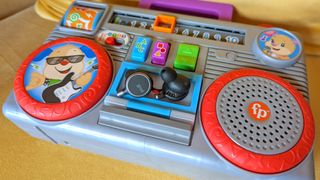
One of the big difference makers between the TWS/1 and Momentum True Wireless series is craftsmanship. These buds are composed of sturdy plastic and aluminum that offers a premium feel and stronger protection. IPX4 certification also makes them sweat and water resistant.

The brushed aluminum charging case (2.59 x 1.33 x 1.54 inches) is just as sleek. What’s not to love about the ‘Space Grey’ color or the thin LED strip on the front indicating charge cycles. It is heavier than any of Apple or Sennheiser’s cases, but much sturdier, and the magnets are powerful to keep the buds docked and lid shut.
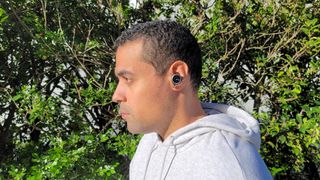
Comfort-wise, the TWS/1 can be worn for 2.5 hours before fatigue sets in. I had no issues using the buds for multiple hours throughout the day. The bulgy cavity rests pleasantly on the concha and the angled sound port slides easily into the canal, allowing the silicone tips to form a tight seal for optimal fit.
Grell TWS/1 review: Controls and digital assistant
Making the most of its real estate, the TWS/1 boasts large touch sensors on that front that support several input methods. These include single, double, and long-tap gestures, which worked half of time. However, the buds also support slide gestures that make controlling track navigation (left/right on the left bud) and volume (up/down on the right bud) seamless.
On-ear detection to automatically pause music while removing the buds didn’t make the cut.

Google Assistant, Siri, and Bixby are all compatible and work well for voice assistance. Grell’s advanced mic array picks up words and long-winded inquiries with precision, even in loud settings. Results are returned as quickly as the digital assistants receive and register commands.
Grell TWS/1 review: Audio quality
On top of stuffing 10.1mm, high-precision custom dynamic drivers into a compact design, Grell programmed these buds with SoundID integration and hi-res streaming via aptX Adaptive and LHDC codecs. The latter allows you to enjoy lossless audio on compatible services (e.g., Tidal, Deezer). There is a bunch to unpack, so let’s begin with Grell’s superb sound profile.
The hand claps and shakers at the start of Earth, Wind, and Fire’s “September” sound incredibly crisp, paving the way for a bright horn section that sets the tone for a lively listen. Transitioning to more boomy tracks, I pulled up Will Sessions’ instrumental rendition of the Nas’ classic “It Aint Hard to Tell,” which features leveling bass that strikes the eardrum with veracity. Hearing it so well balanced was one thing, but what sold me most was how Grell’s profile opened the soundstage for other elements to shine; the synths and “yea” echoes were distinctive and perfectly layered over the melodically funky production.
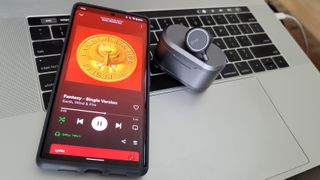
Of all music selections, it was film scores that proved the TWS/1 was an audio beast. I had to pick my jaw up a few times when indulging in Hans Zimmer’s Inception soundtrack, especially on tracks like “Mombasa” where the relentless percussion pattern increased auditory stimulation with every boom and snare strike.
The SoundID app lets you tweak sound by using algorithms to adjust the EQ based on your hearing. Past experiences with the technology have been satisfying, but that wasn’t the case here. I noticed a drop in definition on all aforementioned tracks, and the emphasized lows made the mids and highs bloated. SoundID results are subjective to all listeners, but take it from someone who tests earbuds daily: Grell’s default profile is the way to go.

If you’re worried about noise cancellation compromising sound, don’t be. Grell did a terrific job of maintaining audio quality with ANC or off. aptX Adaptive delivered low-bit rate transmission and hi-res audio. While I would love to share impressions of LHDC, none of my smartphones (Samsung Galaxy Note S20 Ultra, Google Pixel 6 Pro) support the codec, so I’m hoping to update this section with feedback once I get a chance to test it.
Grell TWS/1 review: Active noise cancellation
ANC on the Momentum True Wireless 2 was considered great by many critics, but I’m here to tell you that the TWS/1 outmatches it. Grell’s dual-ANC settings and “low-noise, match-paired microphones” work well to minimize ambient noise across the frequency spectrum. The Bose QuietComfort Earbuds and Sony WF-1000XM4 still remain at the top of the class, but these short-stemmed buds are not that far behind.
Grell’s approach to ANC is more straightforward and honest than other companies. They believe the technology is most suited for blocking out lower frequencies, not so much higher frequencies. That’s where NAR mode comes into play. This feature scans the frequency spectrum and adapts the noise cancellation to diminish mid and high frequencies. Both ANC and NAR settings get the job done.
There was plenty of silence when working inside and outside the house. Common distractions like family chatter, kitchen appliances, loud speakerphone calls, and my toddler’s electronic toys went unnoticed in ANC Mode. Turning on NAR kept high-pitched sounds like cries and squeals to a minimum.

Hanging in the gazebo for breathers was also peaceful for the most part. ANC blocked out airplanes that flew over the house and any landscaping work that occurred next door. NAR served well for eliminating bird chirps and baby screams from 30 feet away, though there were moments where the mics picked up low-frequency noises; lawnmower engines and thunder entered the soundscape.
Enable ANC for strong wind resistance to prevent the whisking effect of brisk winds from harming your hearing.
I was also impressed with TWS/1’s Transparent Mode. This came in handy during strolls with my toddler, letting me hear cars, bicyclists, and runners behind me, as well as loud noises like ambulance sirens from afar. It was most useful during work hours when communicating with the missus over baby care duties. To hear her vocals loud and clear without removing the buds or pausing music was relieving.
Grell TWS/1 review: App and special features
Instead of putting out a companion app, Grell chose to partner with Sonarworks for SoundID app support. As previously stated, the app allows for sound customization. What else does it do? Very little.

There is a Hearing Test you can perform to further personalize your SoundID profile, which requires 6 to 8 minutes of completion and slightly enhances quality. You can also see a graph of your Preference test with frequency descriptors of your sound profile; mine showed “emphasized bass, neutral mids, and accented highs.” Firmware updates and a visual guide for the controls round out the SoundID app’s perks.
Grell TWS/1 review: Battery life and charging case
The TWS/1 holds up to 6 hours of ANC playtime. That is common for most noise-cancelling earbuds, and higher than the AirPods Pro (4.5 hours). It would have been nice if the buds achieved the WH-1000XM4’s battery life (8 hours with ANC on), but I was satisfied with the three days of moderate use they gave me before recharging. Toggling off ANC extended battery life to 8 hours. High volume and hi-res streaming dropped playtimes by about an hour.
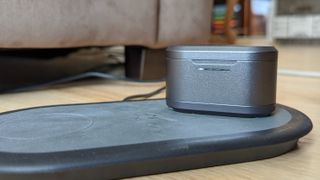
A 10-minute quick charge nets you one hour of use, plus you can charge the buds wirelessly by placing the case on any Qi-enabled charging pad.
The charging case holds between 30 to 40 hours, depending how you use the buds. This is also more portable power than the AirPods Pro (24 hours) and WH-1000XM4 (24 to 35 hours) cases provide. Unfortunately, the case has issues with holding charges. After I fully charged it and left the buds inside for a week, neither had any juice.
Grell TWS/1 review: Call quality and connectivity
If you need to make a call when in a pinch, the TWS/1 should suffice, but don’t expect grand call quality. Several people mentioned that my voice sounded choppy whenever speaking outdoors. Wind and other external sounds were audible and hindered clarity. Calls sounded slightly clearer indoors, though there was still some muffle present.

Bluetooth 5.2 operated decently. Range was shorter than advertised (35 feet instead of 50 feet). Pairing to recognized devices was quick, but the buds could have benefitted from one-tap Google Fast Pair for Android devices.
Grell confirmed that multipoint technology would be available in a future firmware update.
Grell TWS/1 review: Verdict
Axel Grell’s resume automatically set high expectations for the TWS/1. Not every engineer can leave a legacy audio brand like Sennheiser and release a competitor that is as dynamically tuned as what they’ve worked on in the past. Well, someone took the challenge personal and not only created wireless earbuds that are sonically superior to any Sennheiser true wireless model, but also stand out as one the category’s best audiophile options.
Grell’s NAR setting lives up to its noise-cancelling billing and the standard ANC setting is great for putting a muzzle on daily commotion. Clarity and detail for music listening are also excellent. I’m not a fan of stemmed wireless earbuds, but even I can admit that the TWS/1 looks hot, and the build quality is on point.
The finicky controls, lack of extra features, and the charging case’s issue with holding charges are all things that need to be addressed if a second-gen version ever made it to market.
All in all, the ANC and sound on these buds makes them well worth the investment.
